In a survival situation, ensuring you get enough protein will make a big difference. But you can’t always depend on electricity to be there.
What’s more, where I live, we hunt a lot of game. So, our freezer fills up fast. Which is a big reason we preserve our food. To save on space, and to avoid waste. So, without delay, let’s get to it!

Step 1 – How to Prepare Your Stock
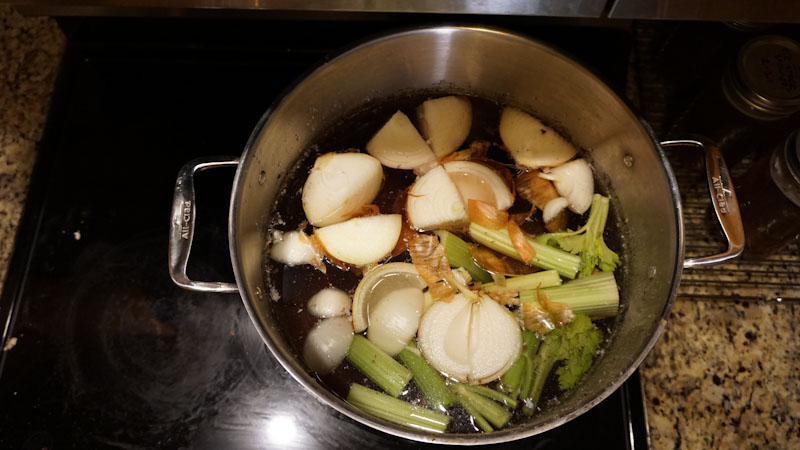
For the stock, your first step is to boil a bit pot of water. Here you will add whatever vegetables, bones, meat, and scraps you wish to use. Before you leave it to simmer overnight (ideally).
Once it’s ready, after filtering the bits out, add your stock to some pre-warmed jars (this’ll stop them from shattering).
Leave about an inch of headspace as you do this.
When you’re done, wipe off the surface and the rims of your jars and lids to ensure a clean point of contact. Then secure your lids tightly.
Step 2 – Adding Your Meat
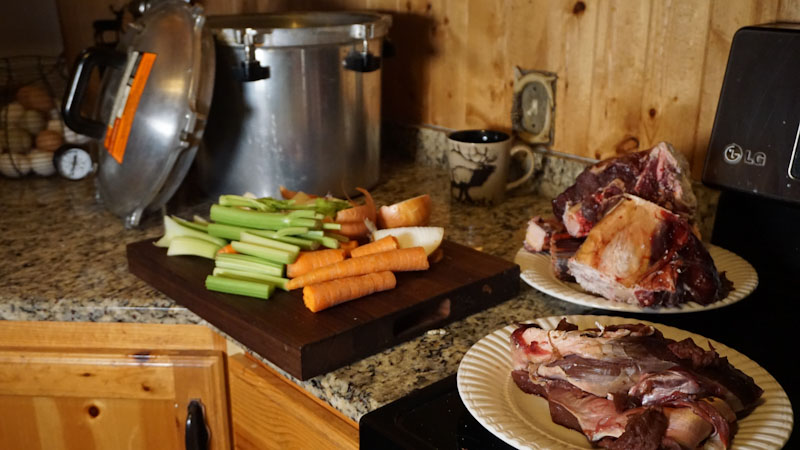
Next, take some cooked meat and pack it into your jars. If it’s still a little pink this is fine as your meat will continue to cook while canning.
As a sidebar, if you’re preserving store-bought meat that’s OK, but in the video above I’ve used cuts from a buck I caught. Just know that, if you buy your meat, high quality chilled meat is best. But the rest is a matter of preference. For example, anything from beef, to lamb, to pork, sausage, veal or even bear meat will do fine.
Ideally your meat would also be freshly cooked, but I have never found that to be practical. One way to avoid this issue is to slowly raise the temperature of the jar as you can it.
Once your meat is really packed in, top up your cans with either water or stock. Again, while leaving a little headspace. Press your mixture down to remove any bubbles before wiping your lids and secure them tightly.
The next step is to put your jars into a pressure canner. They should be also be fully submerged.
Before you close the lid of your pressure canner add some olive oil to your canner’s rim so it’s easier to remove later. Now you’re ready to heat your canner.
Step 3 – How to Can Your Meat
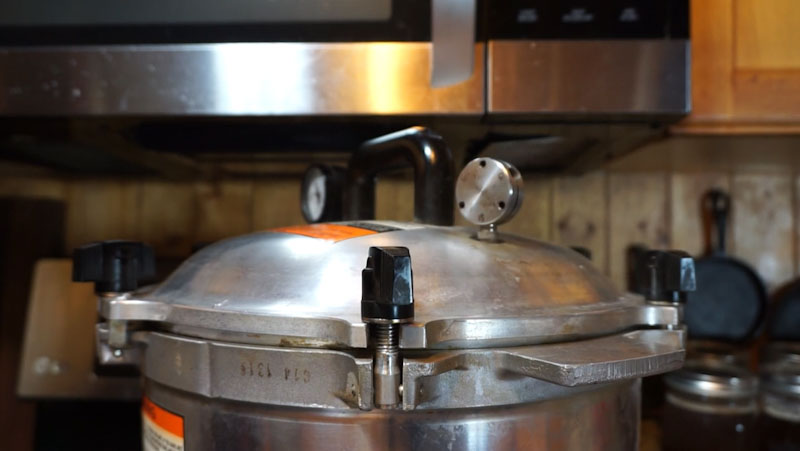
Switch on the heat. Once it’s been venting for 10 minutes, you’ll want to put on the weight. I have set mine to fifteen pounds. But, for a more accurate image of what to do, you should consult your canner’s instructions.
Weight Pointers:
For weighted-gauge canners:
- At up to 1,000 feet above sea level, use 10 pounds of pressure.
- At above 1,000 feet above sea level, use 15 pounds of pressure.
For dial-gauge canners:
- At up to 2,000 feet above sea level, use 11 pounds of pressure.
- At 2,001 to 4,000 feet above sea level, use 12 pounds of pressure.
- At 4,001 to 6,000 feet above sea level, use 13 pounds of pressure.
- At 6,001 to 8,000 feet above sea level, use 14 pounds of pressure.
- At 8,001 to 10,000 feet above sea level, use 15 pounds of pressure.
Once your weight starts to rattle, leave it for 20 minutes. That’s all you need when it’s stock only (for pints). When it’s meat you’ll need to leave it for 75 minutes.
For quart jars you’ll need to leave them for 25 and 90 minutes, respectively.
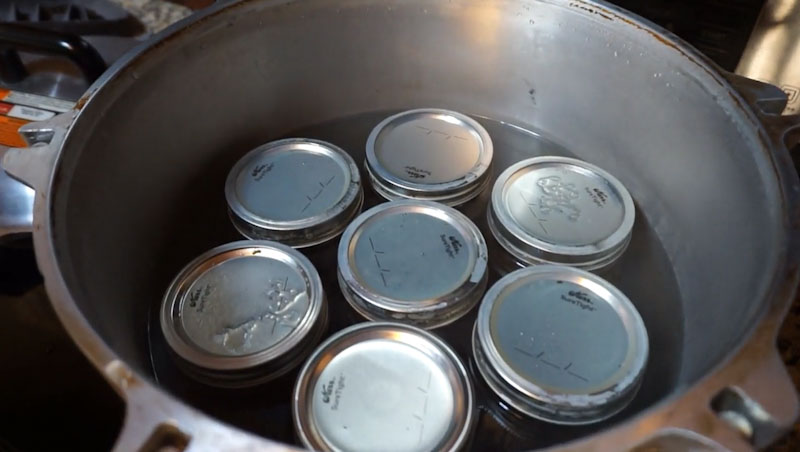
Do not remove the weight from the vent early. Otherwise, you could negatively affect the seals of your jars. Then wait for the pressure and temperature of your canner to dissipate naturally. Take care to check the pressure and temperature of your lid before you remove it.
Step 4 – Removing Your Jars
Then transfer your jars (with tongs) to an appropriate surface to cool off on. Here, they’ll continue to bubble for a few hours.
If your jar lids pop up, this indicates that they did not seal properly. But don’t worry, you can always reprocess them. Once your jars have cooled, simply store them in a cool-dark place until they’re ready to eat. These should safely store for 2 to 5 years. Or even longer.

Final words
I hope you enjoyed this tutorial.
Remember, this is just one of the many lessons you’ll find inside ‘The Lost Frontier Handbook’. So, why not check it out? I’ve found it’s the best way to get inspired and to discover shortcuts you’d otherwise miss.


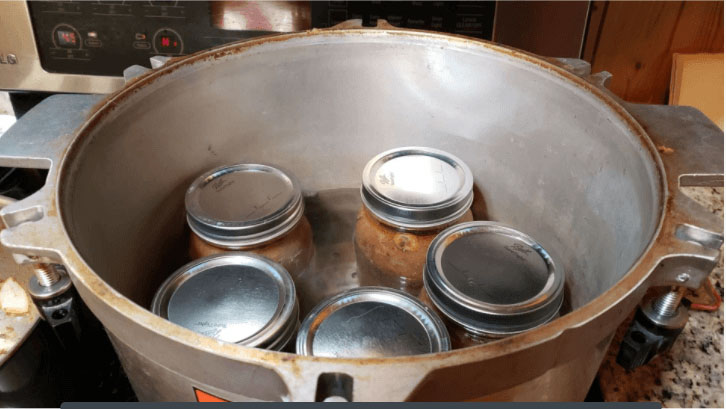
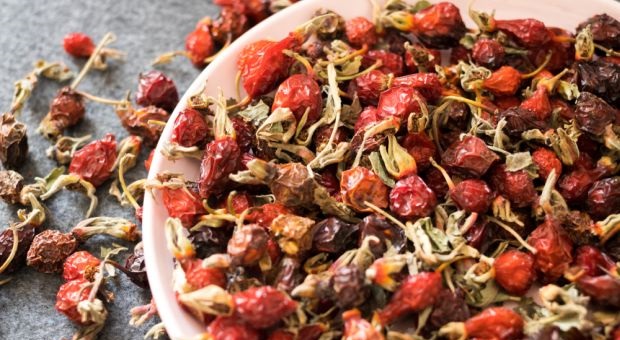
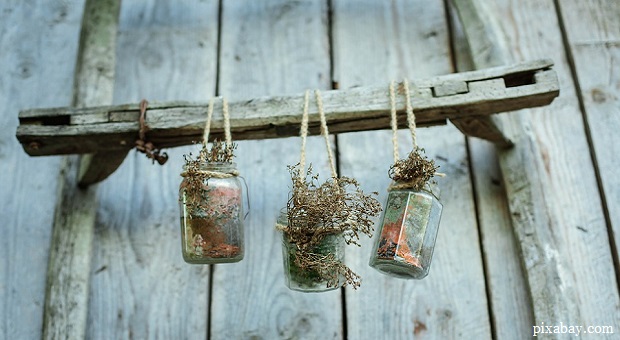

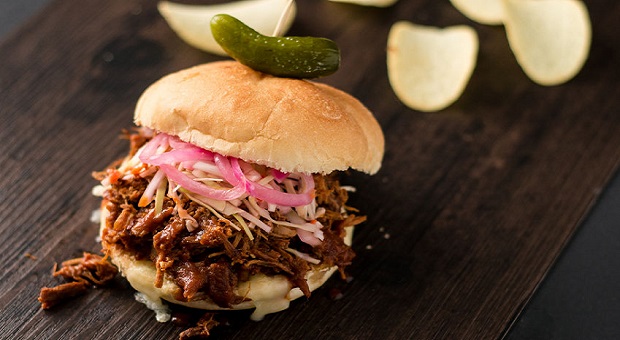


Trudy | March 11, 2024
|
You do not fully submerge jars to pressure can. The temp is reached by superheated steam under pressure. You submerge jars in water bath canning used for high acid foods. There are many canning manuals and websites online. Please get full instructions before canning so your food is safe to consume.
With that said pressure canning is a great way to preserve meat and have shelf stable cooked meat on hand. I have been canning for 50 years.
john silvers | June 6, 2024
|
Trudy,
Do you also write about canning? I would like to follow you if you do. Or, more specifically my better half has been canning for four years and agrees with you and is always in search for the most correct way to can and freeze dry.
Trudy | June 6, 2024
|
I don’t have any kind of blog about canning. I follow best practices in most cases but have done some rebel canning. I have canned milk and heavy cream and butter. I feel like if you pressure can liquids at the right weight and time it will be safe. Just because the government doesn’t put this out as safe doesn’t make it so. If you can can broth and make it safe then you can pressure can milk and make it safe. Some people don’t pressure it long enough imo so I do it same timing as broth. I would never water bath low acid foods. Why risk it? I mostly freeze dry to preserve at this point since we invested in a freeze dryer 8 years ago. But still like canning meats and tomatoes. Be safe is my motto.
john silvers | June 6, 2024
|
While the article does have good information with the one glitch about pressure canning versus water bathing, it does underscore something she shares with me that there is a wide range of opinions of best practices regarding canning and freeze drying. Experience is the greatest determinant of best practices and after 50 years of canning and you ain’t dead yet is a pretty good indicator of best practices.